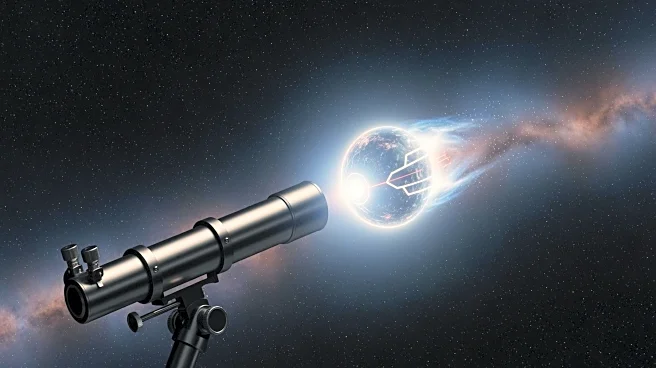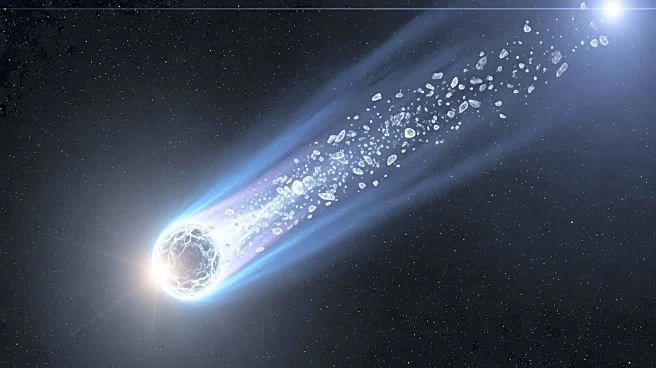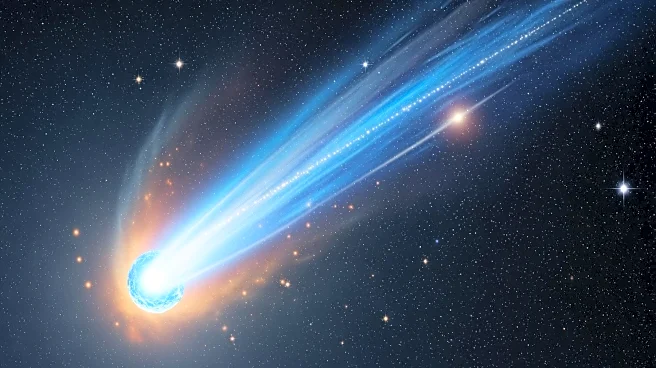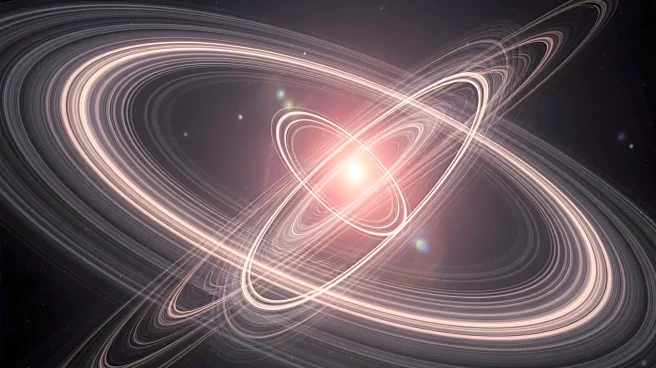What's Happening?
Astronomer Gennady Borisov has identified a new 'nearly interstellar' object, officially labeled as C/2025 V1 (Borisov), following the perihelion passage of the interstellar object 3I/ATLAS. The discovery
was made on November 2, 2025, and the object is now catalogued by NASA's Jet Propulsion Laboratory and the Minor Planet Center. C/2025 V1's orbit is inclined by 113 degrees relative to the ecliptic plane, nearly perpendicular to the orbit of 3I/ATLAS, and does not display a clear cometary tail. The object's orbital eccentricity is 1.0095, suggesting it is not truly interstellar but likely originated from the Oort cloud at the outskirts of the Solar System. The association with the Oort cloud is supported by calculations showing that a small gravitational impulse from Jupiter near perihelion could make a bound Oort Cloud object appear slightly hyperbolic. Additionally, unmodeled outgassing can shift the apparent eccentricity to a value below 1.
Why It's Important?
The discovery of C/2025 V1 is significant as it adds to the understanding of objects originating from the Oort cloud and their interactions within the solar system. The object's characteristics challenge the definition of interstellar objects and highlight the complexities of gravitational influences and outgassing effects. This discovery also raises questions about the nature of 3I/ATLAS, whether it is a natural comet or a technological entity, as its non-gravitational acceleration and complex jet structure suggest possible technological origins. Understanding these objects is crucial for astrophysics, as it could redefine concepts of interstellar travel and the potential for technological entities in space.
What's Next?
Further observations and measurements are planned to determine the nature of 3I/ATLAS, particularly its composition and the velocity of its jets. The Webb telescope will conduct spectroscopy as 3I/ATLAS approaches Earth on December 19, 2025, which could provide insights into whether it is a natural or technological object. These observations will help clarify the object's origins and its potential impact on Earth, especially as it nears its closest approach during the holiday season.
Beyond the Headlines
The discovery of C/2025 V1 and the ongoing study of 3I/ATLAS could have broader implications for understanding the potential for technological entities in space. If 3I/ATLAS is found to be technological, it could suggest the presence of advanced civilizations capable of interstellar travel. This would have profound implications for the search for extraterrestrial life and the understanding of our place in the universe. The ethical and scientific considerations of such discoveries could lead to new policies and research directions in astrophysics and space exploration.











